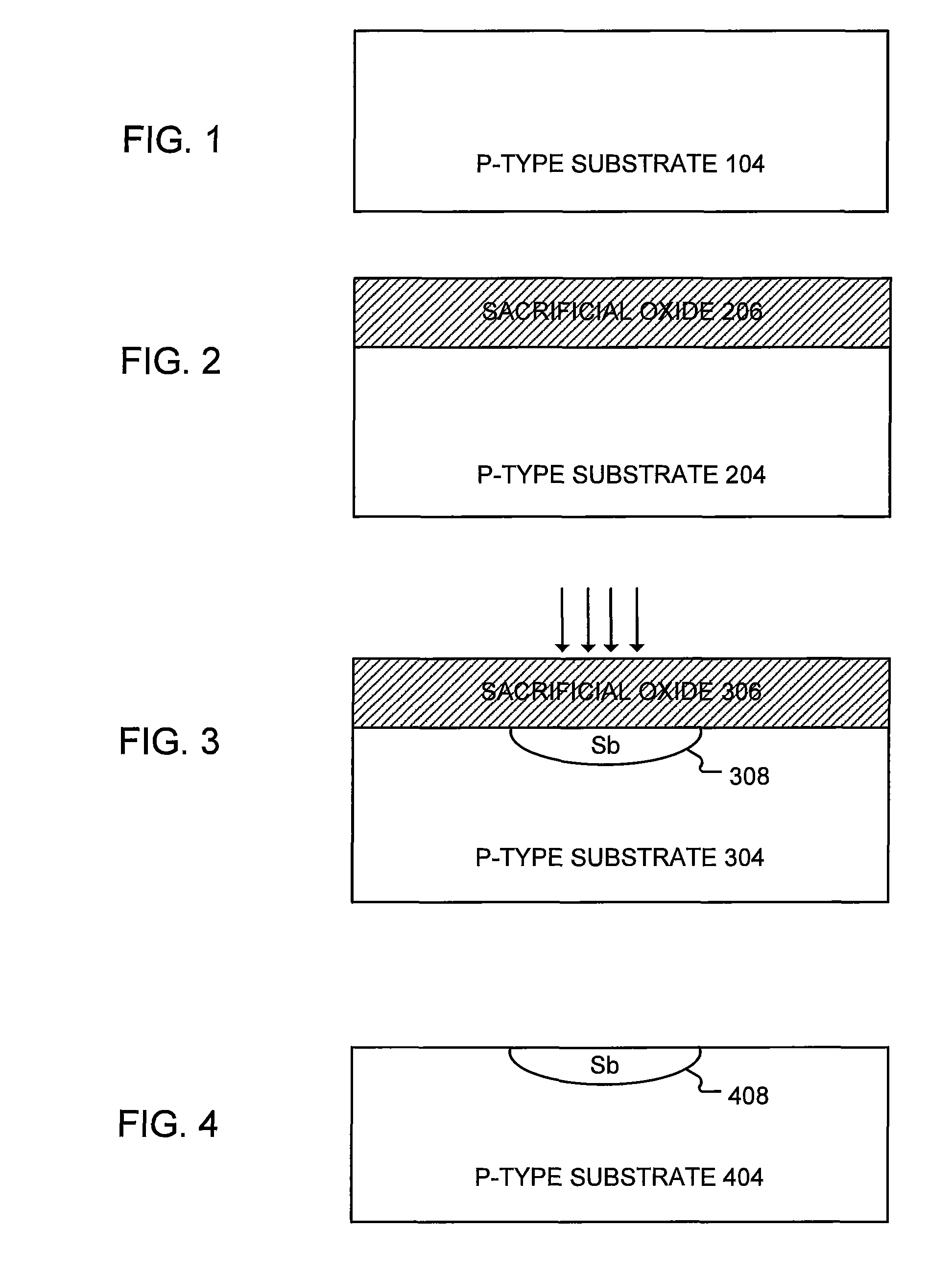Buried layer of an integrated circuit
a technology of integrated circuits and layers, applied in the direction of basic electric elements, electrical apparatus, semiconductor devices, etc., can solve the problems of crystalline defects, insufficient protection effect of sacrificial oxide, and insufficient transit of consumed semiconductor materials, so as to reduce the downside of implantation
- Summary
- Abstract
- Description
- Claims
- Application Information
AI Technical Summary
Benefits of technology
Problems solved by technology
Method used
Image
Examples
Embodiment Construction
[0093]An n-type buried layer in a p-type substrate generally isolates the p-type substrate from the p-type well. An n-type buried layer in a p-type substrate also reduces resistance of an n-well in a p-type substrate.
[0094]A p-type buried layer in an n-type substrate generally isolates the n-type substrate from the n-type well. A p-type buried layer in an n-type substrate also reduces resistance of a p-well in an n-type substrate.
[0095]FIGS. 1-8 show a process flow of making an n-type buried layer on a p-type substrate.
[0096]FIG. 1 shows a p-type substrate 104 on which the n-type buried layer is grown. A p-type epitaxial layer over a substrate is also considered a type of p-type substrate.
[0097]FIG. 2 shows the formation of a sacrificial oxide 206 on the p-type substrate 204.
[0098]The sacrificial oxide is made with a thickness of between about 50 and 300 angstroms. Below 50 angstroms, it is believed that the sacrificial oxide is too thin to provide a substantial protective effect ag...
PUM
 Login to View More
Login to View More Abstract
Description
Claims
Application Information
 Login to View More
Login to View More - R&D Engineer
- R&D Manager
- IP Professional
- Industry Leading Data Capabilities
- Powerful AI technology
- Patent DNA Extraction
Browse by: Latest US Patents, China's latest patents, Technical Efficacy Thesaurus, Application Domain, Technology Topic, Popular Technical Reports.
© 2024 PatSnap. All rights reserved.Legal|Privacy policy|Modern Slavery Act Transparency Statement|Sitemap|About US| Contact US: help@patsnap.com










